Anyone who’s paid any attention to basic science knows that water and electricity are a dangerous combination.
Whether we’ve had it drilled into us to never touch a plug socket with wet hands, or we’ve seen dramatic action movies where huge cables are plunged into a wet floor to subdue a villain, we have a pretty good idea of what electricity can do when water is involved.
But exactly how dangerous is it and how far can electricity travel when it hits water? What happens to all the fish when a bolt of lightning hits the ocean surface? Let’s take a look.
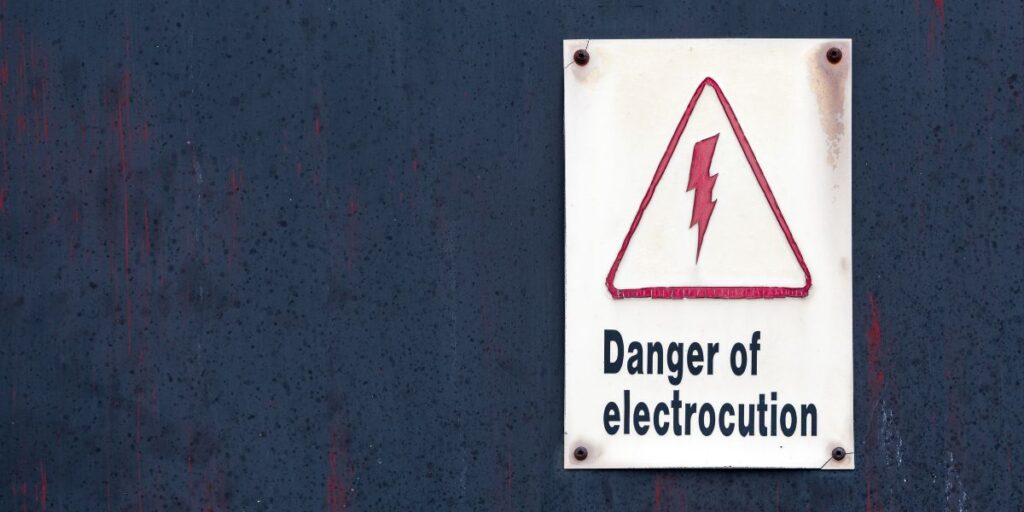
What Happens When Electricity Hits Water?
When electricity hits water, it will pass a charge through that water as it attempts to reach the ground. Electrical currents are always drawn to the ground, where they will level out to the natural voltage of zero. Water is just another conductor that electricity will pass through to reach the ground.
It’s the same whether it’s a bolt of lightning hitting a lake or a live wire in a swimming pool. That electrical charge will pass through the water until it reaches ground, where it will essentially neutralize.
Anything in the path of the current could also act as a conductor, and therefore be electrocuted. This is why it’s not safe to swim in bodies of water during a lightning storm. True, the odds of being electrocuted in water by lightning are very slim, as we’ll cover below, but please don’t take the risk.
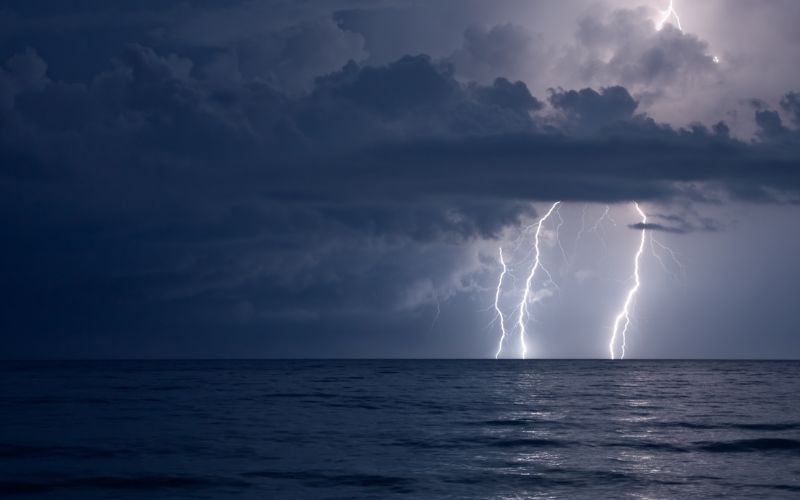
Does Water Conduct Electricity?
Technically, water itself does not conduct electricity. Instead, it’s the impurities in the water – the salts and the metals – that conduct electricity. Because these salts and metals are found in any naturally occurring water, all water tends to conduct electricity.
It’s not a super-conductor, which means there is resistance. The further the electricity has to travel, the lower the voltage becomes.
Electricity will therefore not travel through distilled water in the same way that it will pass through natural water. But as soon as anything else enters that distilled water, it will naturally shed impurities which will make the water conductive again. So you can’t hide in a bathtub full of distilled water, because you’ll contaminate it and make it an electrical conductor.
Water with a higher mineral and salt content will conduct electricity more, so seawater is generally more conductive than lake water or tap water.
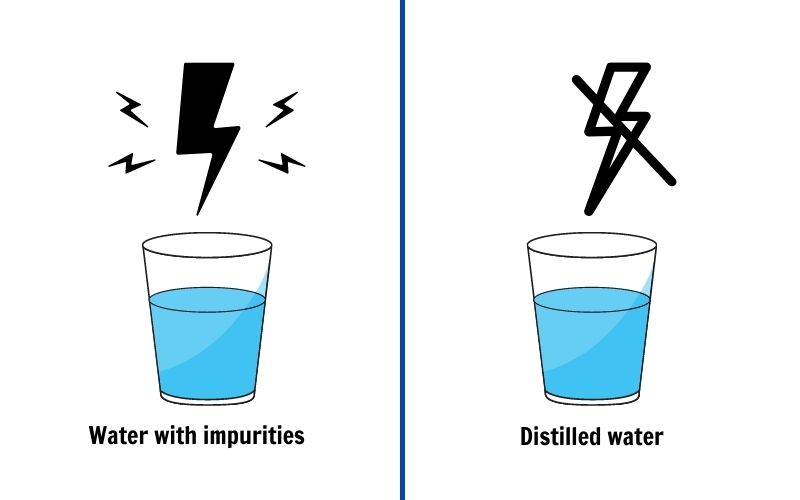
How Far Does Electricity Travel In Water?
The distance that electricity can travel in water depends on a number of factors, including the voltage, the purity and movement of the water, and whether there’s a negative terminal attracting the current or whether it is simply seeking ground. As a rough guide, a typical lightning strike can travel 20 feet in water.
Essentially, the distance that electricity can travel is constantly reduced thanks to resistance. Water is not a super-conductor and so the further the current travels, the weaker the voltage gets until it essentially dissipates.
That’s the same whether it’s a one-off electrical charge – such as a lightning strike – or a constant current, like if a power cable fell into a body of water. In both instances, there is still a single current, and that will dissipate over distance.
The difference is that a lightning strike would electrocute anything within a 20-foot radius immediately, but then completely fade. A power cable could constantly electrocute anything within the radius its current reaches until the power was switched off.
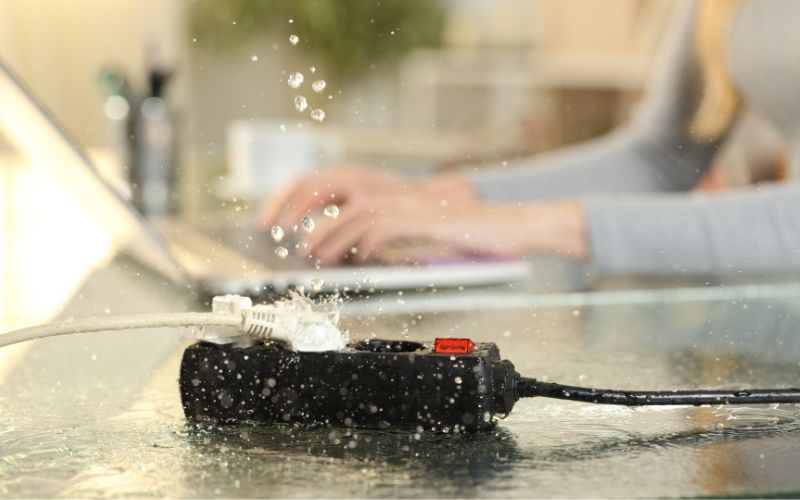
Why Do Fish Not Get Electrocuted When Lightning Strikes The Sea?
The only reason that fish don’t get electrocuted when lightning strikes the sea is that they tend to swim away from the surface. From the point of impact, a lightning strike will create an electrical current 20 feet in every direction in the water – most fish swim below this level.
So in theory, fish could be electrocuted, if they were swimming near the surface. Any other aquatic wildlife that was swimming near the surface close to a lightning strike would potentially be electrocuted too. That would, in theory, include dolphins and whales.
However, the number of times that lightning has struck the ocean isn’t too high, and compared to the vast surface area of the world’s oceans, the odds of a strike landing within 20 feet of a surface-swimming creature are extremely low.
That doesn’t mean it’s impossible, and it’s likely that dolphins and whales have been killed by lightning strikes at some point in history. But the chances of it are so slim that there aren’t any recorded instances you can find.

Is It Possible To Electrocute The Ocean?
Practically, it would not be possible to electrocute the ocean. In theory, it is, but not with any amount of electrical current that could be produced either naturally or by man. The sheer surface of the world’s oceans, and their depth, make it impossible.
It is widely accepted that a single lightning bolt will only pass a current through around 20 feet of water in every direction. A typical lightning bolt carries around 300 million volts and around 30,000 amps.
So, let’s do the math. If a lightning bolt can reach 20 feet in every direction, that means it essentially electrocutes a half-sphere of water on the surface and below.
We know the ‘radius’ is 20 feet, and so using the formula to work out the volume of a sphere (4 divided by three multiplied by the radius cubed) which we can then half to get the half-sphere, we know that a single bolt of lightning can electrocute 16,755 cubic feet of water.
The world’s oceans contain around 321 million cubic miles of water. A single cubic mile is the same as 147,197,952,000 (just over 147 billion) cubic feet.
These are some seriously big sums – but the answer is that you would need 2,820,086,100,000,000 (2.8 quintillion) lightning bolts’ worth of power in order to electrocute the whole of the world’s oceans.
And that is why, practically, it is not possible.
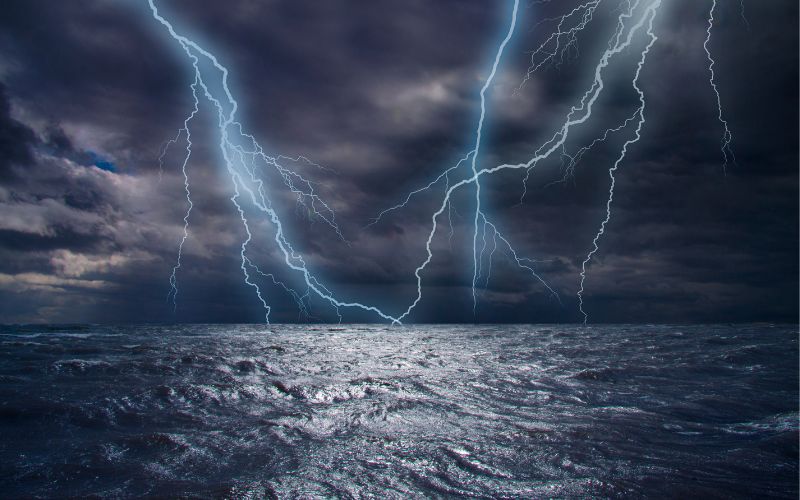
How Can You Tell If Water Is Electrified?
There are no obvious visual signs that water is electrified. In theory, electricity will heat water up and so could cause bubbling, but the current would have to be exceptionally high so this is rare to see.
You can use a Shock Alert to test if water is electrified.
A Shock Alert is a really handy tool if you own a pool or pond and are worried that it could be electrified, either from a pump or another electrical connection nearby. This will quickly tell you if there is an electrical current in the water.
Shock Alert

- Detects electrical voltage in water
- Protects from dangerous electric shocks
Some people online suggest that you can test water using the back of your hand. The theory is that, if there is a current in the water, it will contract your muscles and cause your arm and hand to contract, with the reaction moving your arm away from the water before it has time to properly cause any damage.
I would not recommend this as a safe test, because there are a number of ways it could go wrong. If the water splashed you at all, and created a path to the palm, then you may jerk the other way.
And if you slipped for any reason and submerged your hand, you would likely suffer lethal electrocution if the voltage was high enough to do so.
Always treat potentially electrified water as an extremely dangerous hazard, and use the proper tools to test it.
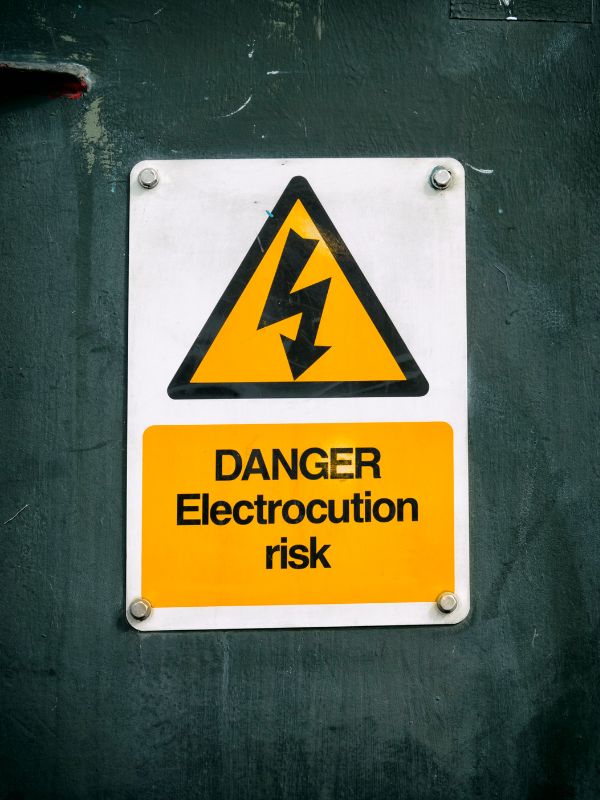
Can Electricity Travel Up A Waterfall?
In theory, electricity can travel up a waterfall. However, it is unlikely that it would. Electricity looks for the path of least resistance, which is unlikely to be the churning current of a waterfall – it will normally instead move to ground as quickly as possible.
Remember that water molecules are not what conducts electricity, but the salt and metals in the water do carry the electrons. Depending on the waterfall size and velocity, there’s likely to be a lot of air churned into the water, and it won’t be a smooth stream.
That means that there’s less of a natural path of salts and metals for the electrons to move through, and so the current would look for an easier alternative, likely to be the ground where the waterfall flows into.
Inherently, current doesn’t stop electricity, and if the current is smooth then electricity could easily travel upstream instead of downstream if that was the easiest path to ground. Waterfalls aren’t generally smooth though, so it wouldn’t happen.
The Bottom Line
While you should always respect electricity when it comes to water, it’s not something you need to panic about at all times. While electricity will absolutely pass through (most) water, it’s not super-conductive.
It’s still dangerous, but it all depends on the volume of water. A live toaster dropped into a bath will kill you. A live toaster dropped in the opposite end of a swimming pool won’t. Not that this is a common example, but you get the point.
You should still use common sense to look after yourself. Yes, the odds of being electrocuted by a lightning strike on a lake or an ocean are rare, but why risk it? Respect what electricity can do, and take sensible precautions at all times.
